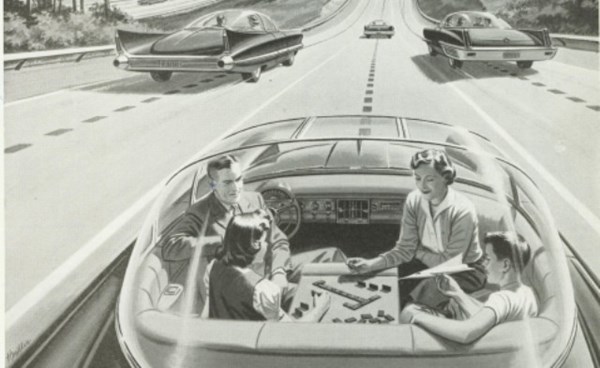MOUNTAIN VIEW, CALIF., May 8, 2014 (GLOBE NEWSWIRE) -- The Computer History Museum (CHM) announced today the launch of a new exhibit on the history of autonomous vehicles.
The exhibit is called "Where To? A History of Autonomous Vehicles" and it chronicles the decades-long challenge of bringing self-driving cars to the general public. Self-driving cars have remained perpetually "two decades away" since the 1930s, while over the past century, autonomous and semi-autonomous vehicles have conquered the air, sea, and roamed the edges of our solar system.
"The Museum is very excited about bringing this fascinating topic to the public. If you live in the Bay Area, Google self-driving cars are a common sight, but until now, the public hasn't gotten a chance to see these cars up close," said Kirsten Tashev, Museum Vice President of Collections and Exhibitions. "Even more exciting, is the opportunity this exhibit presents for the Museum's large international audience, who will be particularly excited to learn about the Google self-driving cars as well as other cool Silicon Valley companies, like Matternet, who is developing drones to deliver medicine to remote areas, and Velodyne, the company that developed the LiDAR, which is a key technology used on most self-driving cars."
In this timely new exhibit, visitors will learn about the history of autonomous vehicles, enjoy science fiction and popular culture dreams of the driverless family car, get up close with the Google self-driving car, and learn how this amazing technology works.
"Self-guiding vehicles go way back, from auto tillers on sailboats to the modern torpedo in the 1860s, and autopilots for planes before World War I. Your breakfast cereal was likely harvested by a driverless combine. Robotic carts are cruising around Mars right now. Yet one deceptively modest goal has stayed in the driveway since our grandparent's youth and that's the self-driving family car," said Marc Weber, Founder and Curator of the Museum's Internet History Program. "In this exhibit we're exploring the history of autonomous vehicles in general, and the elusive dream of a car that drives itself."
"Where To? A History of Autonomous Vehicles" opens to the public on May 9th and will remain on exhibit through the end of November.
The Computer History Museum would like to thank the following people and organizations who generously gave their time to help guide the exhibit content or who provided photos, footage or artifacts: Stanford Center for Automotive Research Executive Director Sven Beiker, Illustrator Harry Campbell, self-driving pioneer Ernst D. Dickmanns, General Motors, Google Self-Driving Car team, Matternet, Monterey Bay Aquarium Research Institute, Singularity University Chair of Computing Brad Templeton, and Velodyne Inc.
This exhibit was made possible through the generosity of Google Inc.
About the Computer History Museum
The Computer History Museum in Mountain View, California, is a nonprofit organization with a four-decade history as the world's leading institution exploring the history of computing and its ongoing impact on society. The Museum is dedicated to the preservation and celebration of computer history, and is home to the largest international collection of computing artifacts in the world, encompassing computer hardware, software, documentation, ephemera, photographs, and moving images.
The Museum brings computer history to life through large-scale exhibits, an acclaimed speaker series, a dynamic website, docent-led tours, and an award-winning education program. The Museum's signature exhibition is "Revolution: The First 2000 Years of Computing," described by USA Today as "the Valley's answer to the Smithsonian." Other current exhibits include "Charles Babbage's Difference Engine No. 2," IBM 1401 and PDP-1 Demo Labs.
For more information and updates, call (650) 810-1059, visit www.computerhistory.org, check us out on Facebook, and follow @computerhistory on Twitter.
A photo accompanying this release is available at: http://www.globenewswire.com/newsroom/prs/?pkgid=25236
